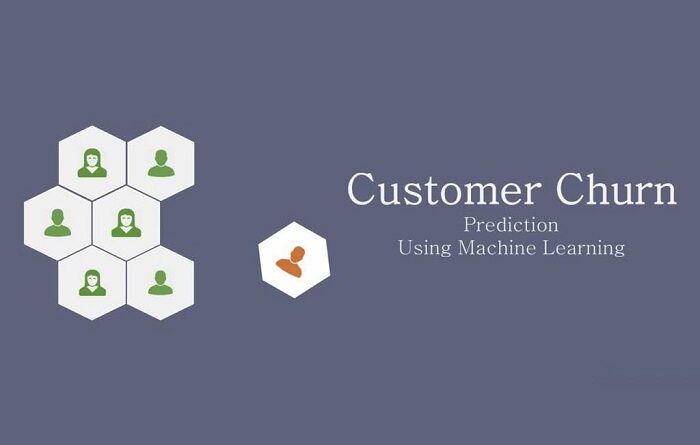Predicting and Controlling Customer Churn Using Machine Learning
Customer churn prediction using machine learning is crucial for every business to make a good profit. It is the loss of customers with the direct loss of revenue. To reduce the loss, the cost of gaining a new customer becomes more expensive compared to gaining a new customer.
It is essential to gain insights into the customers leaving your business. By doing this, you can use these insights to decrease the customer churn rate. Machine learning refers to a group of technologies that performs automatic pattern recognition. Learning from experience plays an important role in developing services and products for this process.
Advanced analytics versus traditional
The use of traditional analytics tools is there to help who churned and the loss of revenue. Both metrics are very important; you want to look back and understand how to reduce customer churn. Once we introduce advanced analytics in the process, you can start to look forward and answer many questions. The main thing to understand is what to do about customer churn before it starts happening. Customer retention with machine learning is there to help in gaining the right set of customers.
The most common way for businesses is to use a predictive model to predict who will churn out in the future based on historical data, but that’s not enough because not all customers are alike. Some customers have different behavior patterns, some have different needs, and some have different expectations from your company.
The main difference between traditional and advanced analytics tools is that traditional analytics helps you look back at past events. In contrast, advanced analytics helps you look forward to future events with the help of customer churn using machine learning algorithms.
Customer data: The customer’s data will have the demographics, revenue, perceptions, and behavior. It is easy to define the revenue and the demographics, but the behavior and the perception are not usually on a straight path as both depend on the case to case on the business.
Customer data can get collected through surveys or interviews, but it is better to collect it through online surveys to get more accurate results. The data collected from online surveys would be more accurate and timely than other customer data methods.
The information obtained from these surveys will help you to understand your customers better and help you to develop marketing strategies for your business.
Exploring the customer data:
After exploring the dataset, we can visualize it with some basic statistical measures. The data explorer in machine learning also provides an option for visualizing the data. It is very useful for exploring the dataset and identifying its problem areas.
The data explorer works on calculating the average and other basic measures. The first step is to open the view of the data explorer by clicking on it in the left side panel of Azure ML Studio. The second step is to select the Dataset tab and then click on New Query. We need to select our existing dataset in this section and click the Next button.
Opening up the view of the data explorer showcase that our churn sample can get unbalanced because there are more samples than rows in our dataset. That means more rows than samples in our churn dataset which can lead to overfitting while training our model. So we need to do some transformations on this dataset before feeding it into our machine learning algorithm for predicting churn probability for each customer based on their recent transactions history with our company’s credit card division.
Testing the customer churn
In this tutorial, we will focus on how to test the model quality estimation using cross-validation. The main idea is to use the learner predictor block to estimate the model quality. This learner predictor block is inserted into a cross-validation loop. The cross-validation loop looks like this:
The first step of the cross-validation loop is to split the data into training and test sets. Then, you train your model with the training set and predict on the test set. Next, compute your accuracy metrics for both datasets. Finally, you compare these results with each other and choose the best one based on your metric(s).
Deploy the customer churn
To deploy the customer churn, the researcher has to decide on the number of days and months they would like to predict. That can get done by looking at the data set and seeing how many days or months are available.
The next step is writing a python script that does all the work. In this example, we have taken a random sample from our data set and removed 5% because we want it to be less biased towards any particular group of customers.
We have used the panda’s library for this purpose as it provides efficient tools for manipulating tabular data. We have also used the NumPy library for matrix operations and scikit-learn for machine learning.
Introduction of machine learning to the data
Machine learning is a set of techniques that automates data analysis. The process is not magic; it is all about finding the patterns for the data provided. It is a scientific approach to data analytics and has been around for years.
It was first introduced in the 1950s, but its popularity increased only after 2012 when it started being used in web services like Google’s search engine and Microsoft’s Bing.
Machine learning can get used in many ways: simple tasks like sorting and searching to more complex ones like predicting what will happen next, making decisions, automating processes, and even solving problems.
Machine learning can help you identify trends in customer churns, predict which customers are likely to leave your business, or detect frauds before they occur.
However, machine learning cannot solve all problems by itself; it requires human intervention at some point during its process because no algorithm can be perfect.
Conclusion
Ultimately, Customer churn prediction using machine learning models assumes that the output is constant because the aggregation of all the inputs will always equal the actual target. Choosing the most influential parameters is considered a challenge in churn prediction problems, and several features are involved in modelling. Also, regression limits forecasting for a small number of observations, whereas classification algorithms can achieve higher accuracy for low-dimensional data. In this research, we implement some algorithms based on a machine learning framework to predict customer churn.



